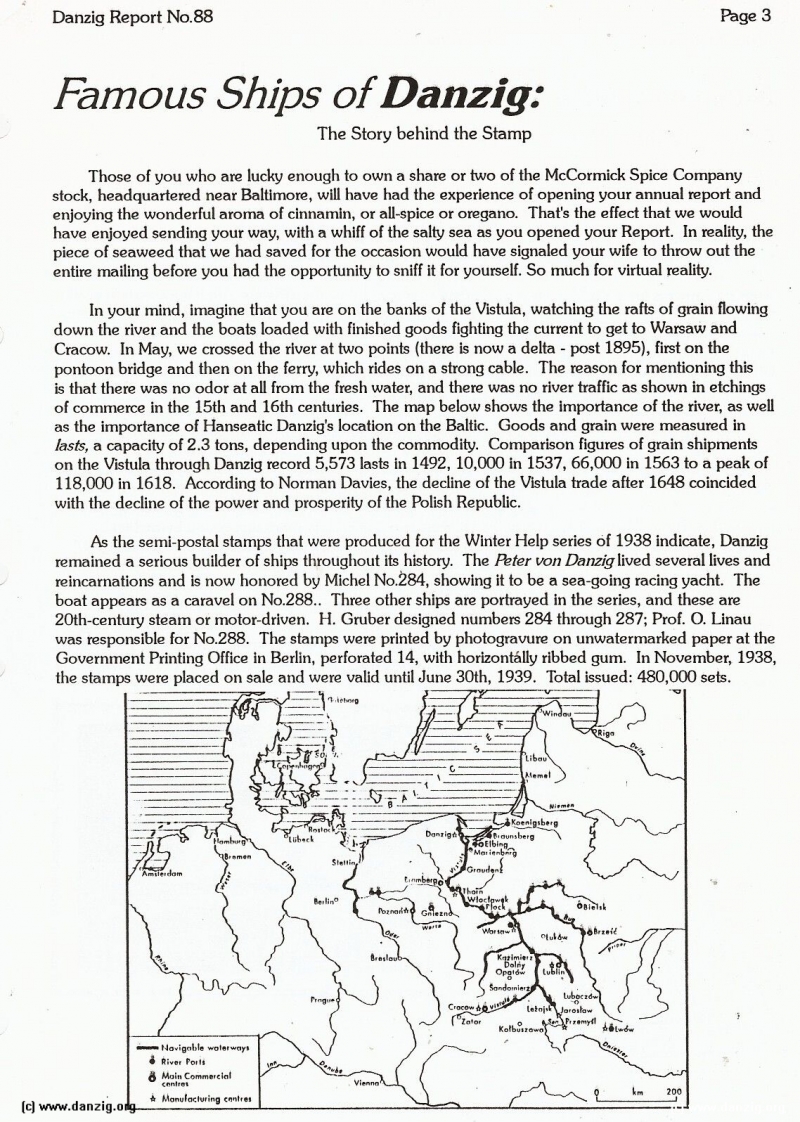
Those of you who are lucky enough to own a share or two of the McCormick Spice Company stock, headquartered near Baltimore, will have had the experience of opening your annual report and enjoying the wonderful aroma of cinnamln, or all-spice or oregano. That’s the effect that we would have enjoyed sending your way, with a whiff of the salty sea as you opened your Report. In reality, the piece of seaweed that we had saved for the occasion would have signaled your wife to throw out the entire mailing before you had the opportunity to sniff It for yourself. So much for virtual reality.
In your mind, imagine that you are on the banks of the Vistula, watching the rafts of grain flowing down the river and the boats loaded with finished goods fighting the current to get to Warsaw and Cracow. In May, we crossed the river at two points (there Is now a delta - post 1895), first on the pontoon bridge and then on the ferry, which rides on a strong cable. The reason for mentioning this is that there was no odor at all from the fresh water, and there was no river traffic as shown in etchings of commerce in the 15th and 16th centuries. The map below shows the importance of the river, as well as the importance of Hanseatic Danzig’s location on the Baltic. Goods and grain were measured in lasts, a capacity of 2.3 tons, depending upon the commodity. Comparison figures of grain shipments on the Vistula through Danzig record 5,573 lasts In 1492, 10,000 In 1537, 66,000 in 1563 to a peak of 118,000 in 1618. According to Norman Davies, the decline of the Vistula trade after 1648 coincided with the dedine of the power and prosperity of the Polish Republic.
As the semi-postal stamps that were produced for the Winter Help series of 1938 indicate, Danzig remained a serious builder of ships throughout its history. The Peter von Danzig lived several lives and reincarnations and is now honored by MIchel No.284, showIng it to be a sea-going racing yacht. The boat appears as a caravel on No.288.. Three other ships are portrayed In the series, and these are 20th-century steam or motor-driven. H. Gruber designed numbers 284 through 287; Prof. 0. Linau was responsible for No.288. The stamps were printed by photogravure on unwatermarked paper at the Government Printing Office In Berlin, perforated 14, with horIzontally ribbed gum. In November, 1938, the stamps were placed on sale and were valid until June 30th, 1939. Total Issued: 480,000 sets.
Danzig Report Nr. 88 - July - August - September - 1995, Page 3.
Hits: 3556
Added: 11/07/2015
Copyright: 2025 Danzig.org

